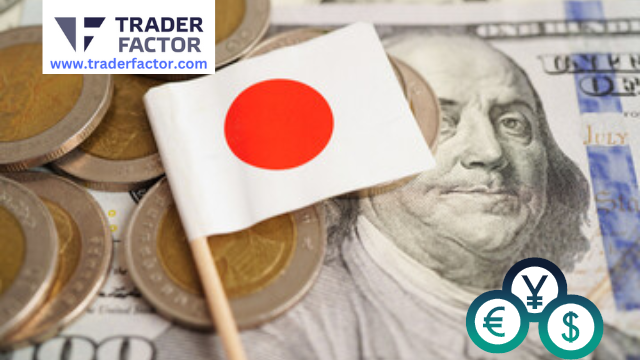Embrace the power of breakouts and elevate your trading journey to new heights with the Forex Breakout Strategy.
If you’re a forex trader looking for a profitable trading strategy, you’re in the right place. The forex market is known for its volatility and fast-paced nature, making it an ideal environment for breakout and trading strategies. In this article, we will explore the Forex Breakout Strategy and provide you with a comprehensive guide to help you trade breakouts successfully in forex markets.
In this discussion:
We will explain what a breakout is in the forex market and why it is a significant trading opportunity. We’ll discuss key concepts such as support and resistance levels, trend lines, and consolidation patterns.
You will learn how to identify potential breakout setups using various technical analysis tools. We’ll explore breakout patterns like triangles, rectangles, and head and shoulders formations, and teach you how to spot them on price charts.
Once you’ve identified a breakout setup, knowing when to enter and exit a trade is crucial. We’ll discuss different entry strategies such as buying on a breakout above resistance or selling on a breakout below support. Additionally, we’ll cover stop-loss placement and take-profit targets to help you manage your trades effectively.
Successful trading requires proper risk management. We’ll emphasize the importance of setting appropriate position sizes, using stop-loss orders, and managing your overall risk-to-reward ratio to protect your capital and maximize profits.
For more experienced traders, we’ll dive into advanced breakout techniques such as fakeouts and pullback breakouts. These strategies can help you capitalize on market reversals and optimize your trading edge.
Lastly, we’ll address the psychological aspect of breakout trading. We’ll discuss the importance of discipline, patience, and controlling emotions while executing your breakout strategy. Understanding and managing your mindset is essential for long-term success.

By the end of this discussion, you’ll have a clear understanding of the Forex Breakout Strategy and how to implement it effectively in your trading. Whether you’re a beginner or an experienced trader, this guide will equip you with the knowledge and tools necessary to identify breakout opportunities, manage your risk, and ultimately increase your profitability in the forex market.
Get ready to take your forex trading move to the next level with the power of breakouts.
Table of Contents
ToggleForex Breakout Strategy: A Guide for Profitable Trading

How to Identify Breakout in the Forex Market
To effectively identify breakouts in the forex market, you most traders can follow these key strategies:
Look for key levels of support and resistance on a forex chart
Support and resistance levels are areas where price has historically reversed or stalled. When price breaks above a resistance level or below a support level, it could indicate a potential breakout. These levels can be identified using technical analysis tools such as trend lines, horizontal lines, or moving averages.
Use technical indicators to confirm a potential breakout
Technical indicators can provide additional confirmation of a breakout. For example, the Relative Strength Index (RSI) and Moving Average Convergence Divergence (MACD) are commonly used momentum indicators. An increase in the RSI value or a bullish crossover on the MACD histogram could signal a strengthening breakout.

Watch for a sharp increase in trading volume
Breakouts are often accompanied by a surge in trading volume. High volume indicates increased market participation and conviction, validating the breakout. Monitoring volume patterns can help confirm the strength of a breakout and differentiate it from false breakouts with low volume.
Monitor news events that could impact the currency pair you are trading
Economic announcements, geopolitical events, and central bank decisions can significantly move stock indices and impact currency pairs. News releases can act as catalysts for breakouts by creating volatility and shifting market sentiment. Stay updated on relevant news events to identify potential breakout opportunities.
Use price action analysis to confirm a breakout
Price action analysis involves observing and interpreting the movement of price action signals on the chart. Look for strong bullish or bearish candlestick patterns that confirm the breakout. For example, a bullish breakout may be confirmed by a strong bullish candlestick closing above the resistance level.
By using forex trades and combining these trading strategies together, you can increase your ability to identify and confirm breakouts in the forex market. Remember to practice proper risk management in forex markets and always use stop-loss orders to protect your forex trades.
Types of Breakout Strategies

When it comes to forex and trading strategies, breakout strategies are widely used by traders to identify potential profit opportunities in financial markets. In this article, we will explore different types of breakout trading strategies, that can be employed to enhance your forex trading success.
Momentum Breakout
Momentum breakout strategy focuses the bullish traders on identifying strong and sustained price movements. Traders look for instances where the price breaks through a key level of either resistance level or support with a surge in trading volume. This indicates a significant shift in market sentiment, potentially leading to a profitable trade.
Reversal Breakout
Reversal breakout strategy aims to identify potential trend reversals in the market. Traders closely see price movement in the futures markets and monitor price patterns and technical indicators to spot situations in futures markets where the price breaks through a support or resistance level, indicating a reversal of the prevailing trend. By entering trades at the early stages of a major trend reversal in futures contracts, traders can potentially capitalize on the change in market direction.

Trendline Breakout
Trendline breakout strategy involves the use of trendlines, which connect a series of higher lows or lower highs on a price chart. When the price breaks through a strong trend-line, it signifies a potential shift in market dynamics. Traders use this breakout of strong a trend line, as a signal to enter trades in the direction of the breakout, aiming to ride the new trend line up for maximum profit.
News Event Breakout
News event breakout is trading strategy that capitalizes on the impact of significant news releases on the forex market. Traders pay close attention to economic indicators, central bank announcements, geopolitical events, and other market-moving news. When a news event causes a breakout, traders attempt to enter trades in the direction dictated by the news, taking advantage of the resulting market volatility.
Volatility Breakout
Volatility breakout strategy focuses on identifying periods of high market volatility. Traders look for situations where the price breaks through a range or consolidates pattern, indicating an increase in volatility. By entering trades during volatile periods, traders can potentially profit from significant price movements.

By understanding and utilizing these different types of breakout strategies, forex traders can enhance their ability to identify profitable trading opportunities. However, it is crucial to remember that no strategy guarantees success, and risk management should always be a priority in trading endeavors.
Best Indicators to Use for Forex Breakout Trading

When it comes to breakout trading in the forex market, using the right indicators can help you identify potential breakouts and confirm their strength. Here are some of the best indicators to consider:
Bollinger Bands
Bollinger Bands are a popular volatility indicator that consist of three lines plotted on the price chart. The middle band is a simple moving average (typically 20 periods), while the upper and lower bands represent the standard deviations from the moving average. Breakouts often occur when the price breaks above or below the outer bands, indicating increased volatility and potential trend continuation.
Moving Average
Moving averages are widely used indicators that help identify trend direction and potential breakout points. Traders often use the crossover of two moving averages or the price crossing above or below a moving average as a sign of a breakout. For example, when a shorter-term moving average crosses above a longer-term moving average, it could indicate an upward breakout signal.

Relative Strength Index (RSI)
The RSI is a momentum oscillator that measures the speed and change of price movements. It ranges from 0 to 100 and is typically used to identify overbought and oversold conditions. In breakout trading, traders look for the RSI to move above 70 for a bullish breakout or below 30 for a bearish breakout. This can help confirm the strength of the breakout and potential trend continuation.
Ichimoku Cloud
The Ichimoku Cloud is a comprehensive indicator that provides multiple pieces of information in one visual display. It consists of several lines and a shaded area called the cloud. When the price breaks above or below the cloud, it can signal a potential breakout. Additionally, the Tenkan-sen (conversion line) crossing above the Kijun-sen (base line) can provide a bullish breakout signal, while the opposite can indicate a bearish breakout.
Average True Range (ATR)
The ATR is a volatility indicator that measures the average range between high and low prices over a specific period. Traders can use the ATR to determine the potential price range and volatility levels. A breakout that is accompanied by a significant increase in ATR suggests a potentially strong breakout with higher volatility.

Remember that indicators should not be used in isolation, but in conjunction with other analysis techniques to increase the likelihood of successful breakout trades. Additionally, it’s important to test and adapt your indicator settings and strategies based on the specific currency pairs and timeframes you trade.
Risk Management Strategies for Breakout Trading

When trading breakouts in the forex market, implementing effective risk management strategies is crucial to protect your capital and maximize your profits. Here are some key strategies to consider:
Use a stop-loss order
Placing a stop-loss order is an essential risk management tool for breakout traders. A stop-loss order instructs your broker to automatically close your position if the price moves against you beyond a certain, price level. By setting a stop-loss order, you limit your potential losses and protect your trading account from significant drawdowns.
Set a profit target
In addition to setting a stop-loss order, it’s important to have a predefined profit target for your breakout trades. A profit target determines your entry point and exit point, and when you will exit the trade and lock in your gains. It helps you maintain discipline and avoid holding onto a winning trade for too long, which can result in giving back profits if the market reverses.

Use proper position sizing
Proper position sizing is vital for managing risk in breakout trading. Determine the appropriate position size based on your account size and risk tolerance. Many traders recommend risking only a small percentage of your trading capital (e.g., 1-2%) on each trade. This way, even if multiple trades result in losses, you can withstand the drawdown and continue trading.
Consider the market conditions
Market conditions can greatly impact the success of breakout trades. When assessing market conditions, consider factors such as volatility, liquidity, and overall trend. Breakouts tend to work best in trending markets with higher volatility and sufficient trading volume. Avoid trading breakouts in sideways or range-bound markets where false breakouts are more common.
Avoid overtrading
Overtrading is a common mistake that can lead to increased risk and poor decision-making. Stick to your trading plan and avoid the temptation to enter trades that do not meet your breakout criteria. Wait for high-quality setups with clear breakout signals and favorable risk-to-reward ratios. By being selective and disciplined, you can avoid unnecessary losses and focus on the most promising breakout opportunities.

Implementing these risk management strategies can help you protect your trading capital, minimize losses, and increase your overall profitability in breakout trading. Remember to regularly review and adjust your risk management approach as market conditions change.
Common Mistakes to Avoid When Trading Breakouts

When trading breakouts in the forex market, it’s crucial to be aware of common pitfalls that can hinder your success. By avoiding these mistakes, you can improve your forex trading strategy and increase your profitability. Here are some common mistakes to be mindful of:
Chasing the breakout
One common mistake is entering a trade too late, after the breakout has already occurred and the price has moved down the trend line even more significantly. This can result in entering at unfavorable prices and missing out on potential profits. It’s important to wait for a proper setup and confirmation down trend, before entering a trade.
Failing to use stop-loss orders
A stop-loss order is an essential risk management tool that helps limit potential losses. Failing to set and adhere to stop-loss orders can expose you to significant risks. By setting a stop-loss order at a reasonable price level, you can protect yourself from large losses if the breakout fails or reverses.

Overtrading
Overtrading is a common mistake made by traders who try to capture every breakout opportunity. It’s important to remember that not all breakouts are successful, and trading too frequently can lead to unnecessary losses. Be selective and focus on high-quality setups rather than trading impulsively.
Not considering market conditions
Market conditions can greatly influence the success of breakout trades. Failing to consider factors such as volatility, liquidity, and overall market sentiment can result in trading breakouts in unfavorable conditions. Take into account the broader market context and adjust your trading strategy accordingly.
Ignoring risk management
Proper risk management is crucial in trading breakouts. Failing to assess and manage risk appropriately can lead to significant losses. Determine your risk tolerance, set realistic profit targets, and ensure your risk-to-reward ratio is favorable before entering a trade.

Holding onto losing trades
Holding onto losing trades in the hope that they will eventually turn profitable is a common mistake made by traders worldwide. Breakout trades can sometimes fail, and it’s important to cut your losses and move on. Accepting small losses day trading, is part of the trading process and helps preserve your capital for future opportunities.
By being aware of these common mistakes many traders make and actively avoiding them even a novice of, you can enhance your breakout trading strategy. Remember to approach breakout trading strategy with discipline, patience, and a focus on risk management to increase your chances of success.
Frequently asked questions about the Forex breakout strategy

What is a Forex breakout trading strategy?
A Forex breakout strategy is a trading technique that involves identifying key levels of support and resistance and placing trades when the price breaks out of these levels with strong momentum. Traders aim to take advantage of significant price movements that occur after a breakout.
How does the Forex breakout strategy work in financial markets
The Forex breakout strategy works by identifying consolidation periods in the market where the price is range-bound between support and resistance levels. Traders wait for the price to break above or below these levels, indicating a potential trend reversal or continuation, and enter trades accordingly.
What are the benefits of using Forex breakout trading strategies?
Using a Forex breakout strategy can provide several benefits many traders, including the ability to catch large price movements, increased trading opportunities, clear enough entry points and exit signals, and the potential for high-profit trades.

What indicators can be used to identify breakouts?
Traders often use indicators such as moving averages, Bollinger Bands, and the Average True Range (ATR) to identify potential breakouts. These indicators help to confirm the strength and validity of a breakout.
How do I determine the best time frame for breakout trading?
The choice of time frame to trade on depends on your trading style and preferences. Shorter time frames like 5-minute or 15-minute charts can provide more frequent trading opportunities, while longer time frames like daily or weekly charts offer more reliable and significant breakouts.
How do I manage risk when trading breakouts?
Risk management is crucial when planning your breakout trading strategies. Traders often use stop-loss orders to limit potential losses if the breakout fails. Additionally, they may employ proper position sizing techniques and consider implementing trailing stops to protect profits.
Are there any drawbacks to breakout trading strategy?
One drawback of breakout trading is the possibility of false breakouts, where the price briefly breaks out of a level but quickly reverses. This can result in losses if traders enter trades based on these false breakout signals. It is essential to use confirmatory indicators and analyze the market context before entering trades on trade breakouts.

Are there any strategies to filter out false breakouts?
Yes, traders can use additional filters to reduce the likelihood of trading false breakouts. These may include analyzing the volume during the breakout, looking for multiple time frame confirmations, or waiting for a pullback and retest of the breakout level before entering a trade.
What are Price Patterns
Price patterns are a popular tool used by traders to analyze and predict market movements based on the price movements alone, without relying on indicators or other technical tools. These patterns can provide valuable insights into market trends, reversals, and continuations. Here are some commonly used, price action trading patterns:
Reversal Bar: This pattern occurs when the price forms a bar that indicates a potential reversal in the current trend. It often has a long wick or tail, signaling a rejection of previous price levels.
Key Reversal Bar: Similar to the reversal bar, the key reversal bar signifies a potential trend reversal. It typically has a wide range and engulfs the preceding bars.
Pinocchio Bar: Also known as a pin bar, this pattern has a long tail or wick, indicating a rejection of a certain price level. It can be a bullish or bearish signal, depending on its location within the trend.
Exhaustion Bar: The exhaustion bar suggests a weakening of the prevailing trend. It often has a high volume and a wide range, indicating that the buyers or sellers are losing momentum.
Three-Bar Pullback: This pattern occurs when the price temporarily retraces against the prevailing trend for three consecutive bars. It is often followed by a continuation of the original trend.
False Break: A false break happens when the price briefly breaks a significant support or resistance level but quickly reverses and moves back in the opposite direction. It can trap traders who enter trades based on the breakout.

These price action patterns are just a few examples of the many price movement patterns that traders use to make trading decisions. It’s important to understand that price action patterns should be used in conjunction with other technical analysis tools and should be validated by market context and other indicators.
Points To Keep In Mind About Breakout Trading Strategy

The Forex Breakout Strategy is a powerful tool that can help traders capitalize on the volatility and momentum in the forex market. By understanding the concepts of support and then resistance price levels, identifying breakout setups and price move, using chart patterns and using technical indicators, traders can increase their chances of profitable trading.
The ability to identify key levels of support and resistance on a forex chart is essential for successful breakout trading. These levels serve as potential entry and exit points, giving traders a clear framework for executing forex trades on. Additionally, using technical indicators such as the RSI and MACD can provide confirmation of a potential breakout, increasing the reliability of forex trade signals.
Volume, technical analysis, and monitoring news events are crucial components of breakout trading. High trading volume during a breakout suggests strong market participation, while keeping an eye on news events helps traders anticipate potential trends and catalysts for breakouts. By combining these factors, traders can make more informed trading decisions, and improve their trading outcomes.

Price action analysis further solidifies the validity of breakouts by observing chart pattern on the candlestick charts and the movement of price action traders on the chart. Strong enough price action trading on candlestick charts and patterns can confirm the breakout and provide additional conviction for traders to enter or exit positions.
However, it’s important to remember that risk management is a simple strategy and paramount in breakout trading. Setting appropriate position sizes, using stop-loss orders, and maintaining a favorable risk-to-reward ratio are essential to protect capital and preserve long-term profitability in short trades.
Conclusion

By following the strategies outlined in this guide and mastering the art of breakout trading in forex markets, traders can potentially unlock new opportunities for profit in the forex market. Remember, practice, discipline, and continuous learning are key to become a successful breakout trader in forex markets.
Read these next;
Forex Consolidation Breakout Strategies for Traders
Managing Risks in Forex Trading Without Brokers
Understanding Forex Market Imbalance and How to Use It
Disclaimer:
All information has been prepared by TraderFactor or partners. The information does not contain a record of TraderFactor or partner’s prices or an offer of or solicitation for a transaction in any financial instrument. No representation or warranty is given as to the accuracy or completeness of this information. Any material provided does not have regard to the specific investment objective and financial situation of any person who may read it. Past performance is not a reliable indicator of future performance.















